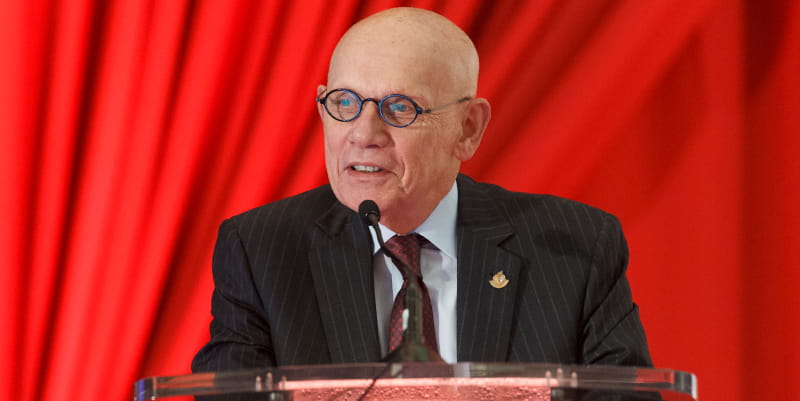AHA chairman: Innovation and collaboration are key to lifesaving efforts
By American Heart Association News

Embarking on his second year as chairman of the American Heart Association, Jim Postl says he’s energized by the organization’s bold and collaborative entrepreneurial efforts.
“We are doing things out of the box, and getting outside our traditional comfort zone,” he said. “We are taking an entrepreneurial approach to doing science and creating partnerships with a range of non-traditional organizations that have the potential to be game-changing.”
Postl, who spent his career working for Fortune 500 U.S. corporations, says the AHA’s creative vigor is “at least equal to some of the most innovative companies.”
The retired president and CEO of Pennzoil-Quaker State Company became involved with the AHA a decade ago as chairman of the Heart Walk in Houston. Soon, he joined the local board, eventually serving as chairman.
“Once you get involved with the AHA, there’s no leaving it,” he said.
Postl’s connection to the AHA’s mission to build healthier lives free of cardiovascular diseases and stroke is personal: His father died after a heart attack in 1967 at 54 and his wife survived a heart attack two years ago.
Postl says he’s especially excited about the AHA’s recent collaborations to leverage the impact of its research funding.
In 2016, the AHA, Verily Life Sciences (formerly Google Life Sciences) and AstraZeneca formed One Brave Idea. The unprecedented $75 million, five-year research project is seeking to detect coronary disease decades before symptoms arise and identify mechanisms, new treatments and therapies to cure it.
In November 2017, the AHA announced its partnership with Lawrence Livermore National Laboratory, which creates the world’s most powerful super computers, to accelerate drug discovery — potentially reducing the time to market by 50 percent.
“We’re not interested in doing something incremental. We want our investments to be game-changing,” Postl said.
He also highlighted the AHA’s Institute for Precision Cardiovascular Medicine, which is attempting to pinpoint the best way to prevent and treat heart disease and stroke by analyzing a person’s genetics, environment and lifestyle.
“In the past, we would fund research through institutions, and they would carry out and report their findings,” Postl said. “Now, we are playing a much more active leadership role.”
In his second year of a two-year volunteer term, the AHA will significantly change the way its manages its business operations, Postl said.
“The AHA is going to have to play a stronger, more powerful role in advocacy and we are going to need to provide more funding for research and get more involved in our underserved communities,” he said.
Postl says the organization must think even bigger to reach $1 billion in revenue by the end of his term.
“My priority in the second year is to work hard with the organization and leadership to think about how to really drive our revenue forward to grow not to a $1 billion, but to $1.5 billion or $2 billion -- because that is what will be necessary for us to drive our mission.”
If you have questions or comments about this story, please email [email protected].





